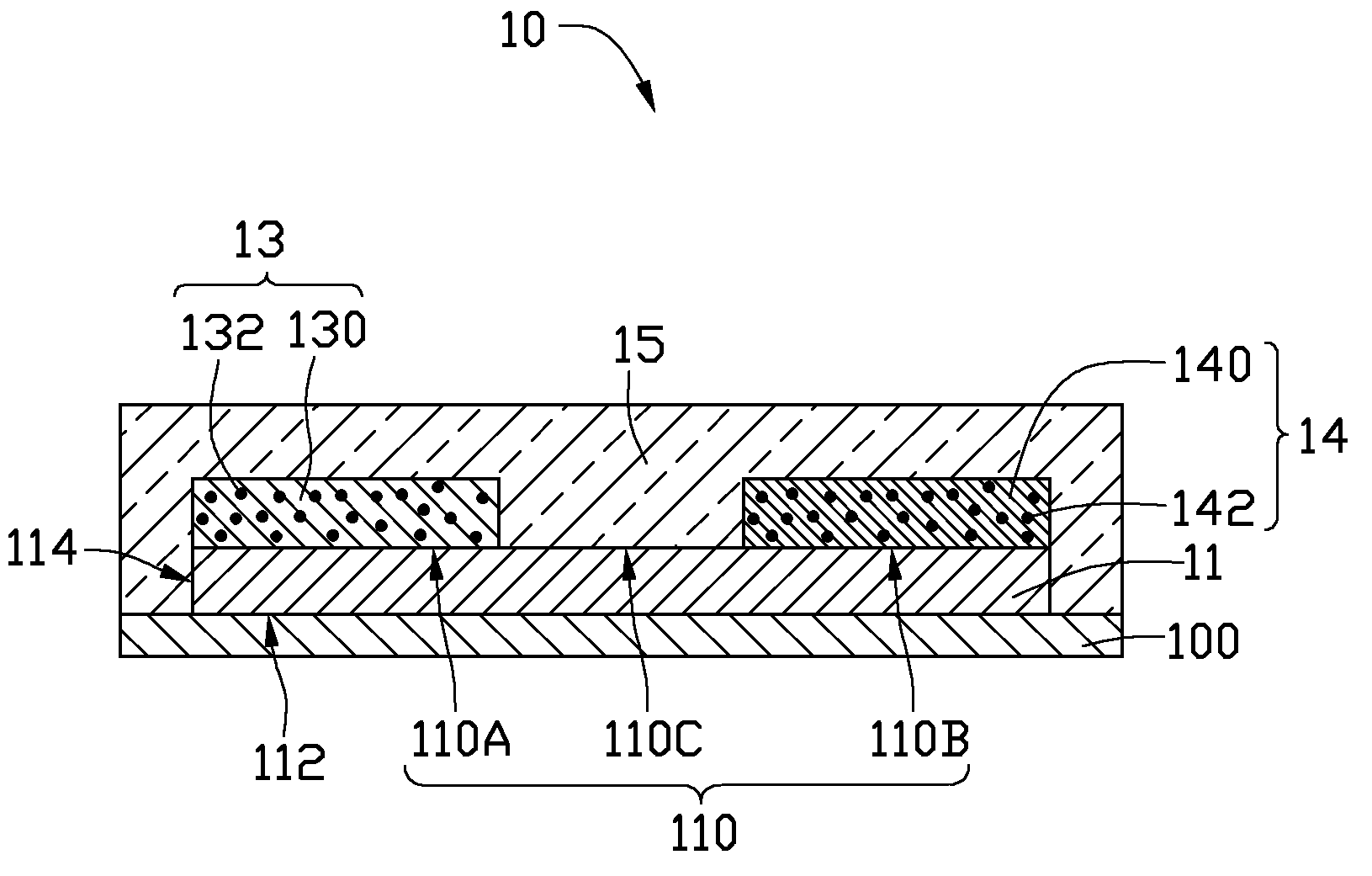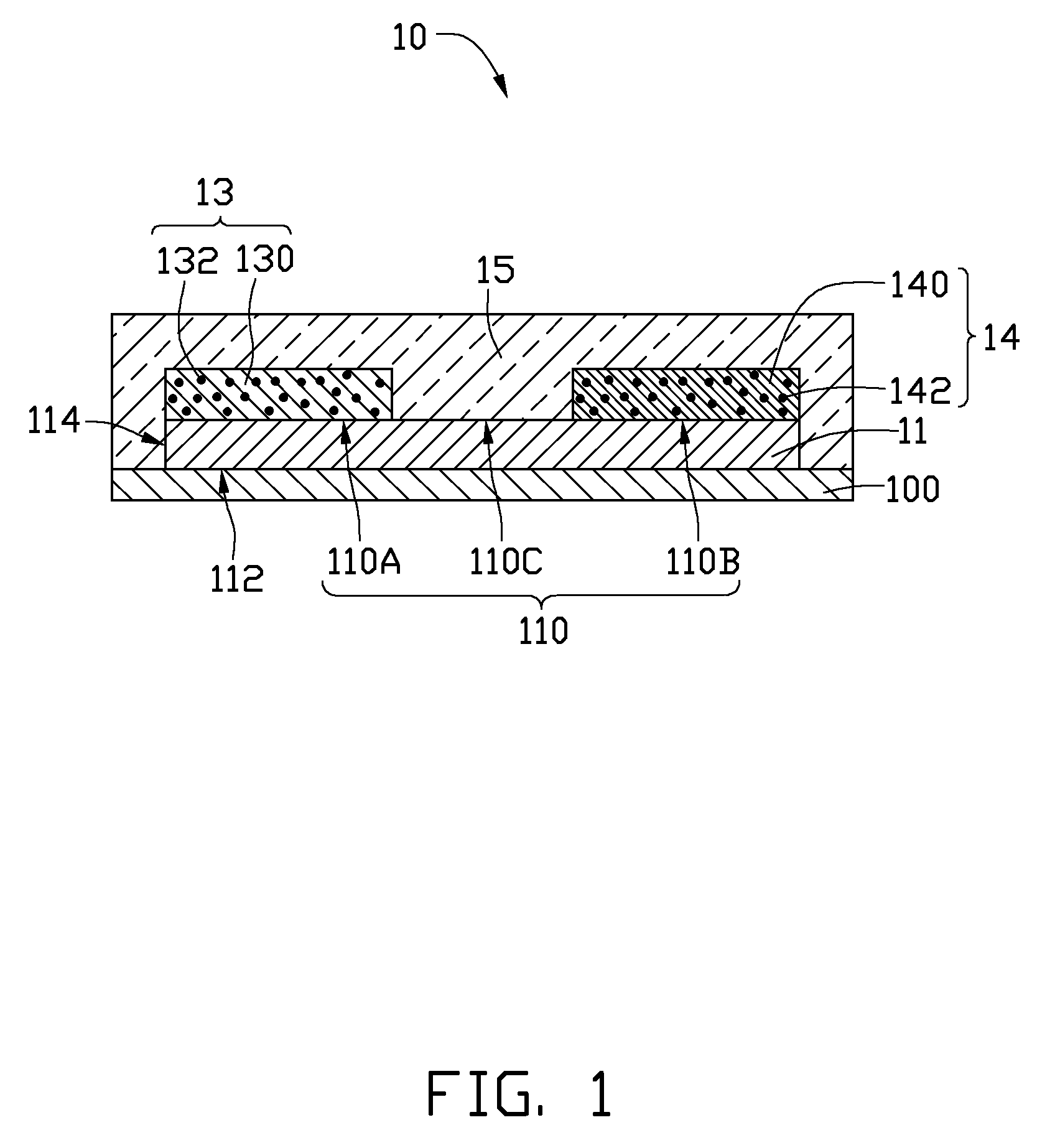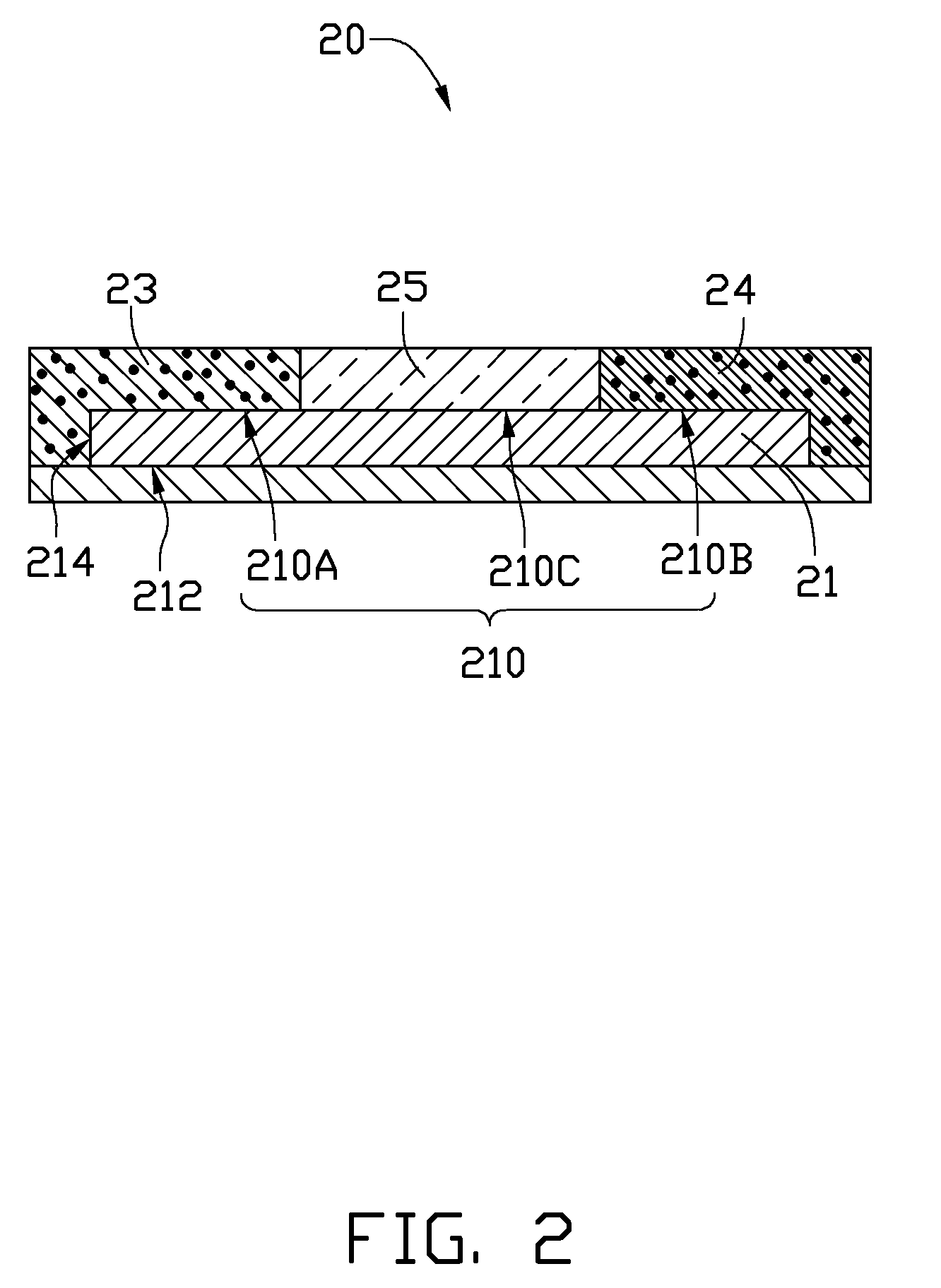Light emitting diode with light conversion
- Summary
- Abstract
- Description
- Claims
- Application Information
AI Technical Summary
Benefits of technology
Problems solved by technology
Method used
Image
Examples
first embodiment
[0014]Referring to FIG. 1, an LED 10, includes an LED chip 11, a first optical wavelength converting layer 13, a second optical wavelength converting layer 14, and an encapsulant layer 15.
[0015]In the illustrated embodiment, the LED chip 11 has a prismy shape, for example, a generally cuboid shape, and is provided to emit monochromatic light. In alternative embodiments, the LED chip 11 may have a generally cylindrical shape, or a general disk shape. The monochromatic light can for example be blue light having a wavelength in a range from 410 nanometers (nm) to 490 nm, for instance 465 nm. In another example, the monochromatic light can be ultraviolet (UV) light. The LED 10 may further include a substrate 100. The substrate 100 can be used as a support on which the LED chip 11 is attached. The substrate 100 can be made of material with high thermal conductivity, such as ceramic. Heat generated by the LED chip 11 can be firstly transferred to the substrate 100, and then dissipated to...
second embodiment
[0023]Referring to FIG. 2, an LED 20, includes an LED chip 21, a first optical wavelength converting layer 23, a second optical wavelength converting layer 24, and an encapsulant layer 25. The LED chip 21 includes a top surface 210, a bottom surface 212, and a peripheral surface 214. The top surface 210 includes a first region 210A, a second region 210B, and a third region 210C.
[0024]The LED 20 is similar to the LED 10 of the first embodiment. However, for the LED 20, the first optical wavelength converting layer 23 extends from the first region 210A to cover part of the peripheral surface 214, and the second optical wavelength converting layer 24 extends from the second region 210B to cover part of the peripheral surface 214. The first and second optical wavelength converting layers 23, 24 cooperatively cover the whole peripheral surface 214. The encapsulant layer 25 only covers the third region 210C of the top surface 210. The first and second optical wavelength converting layers...
third embodiment
[0025]Referring to FIG. 3, an LED 30, includes an LED chip 31, a first optical wavelength converting layer 33, a second optical wavelength converting layer 34, and an encapsulant layer 35. The LED chip 31 includes a top surface 310 at an upper side thereof. The top surface 310 includes a first region 310A, a second region 310B, and a third region 310C.
[0026]The LED 30 is similar to the LED 20 of the second embodiment. However, for the LED 30, a third optical wavelength converting layer 36 is further provided to cover a central part of the third region 310C. The third optical wavelength converting layer 36 includes a third base material 360, and a yellow phosphor 362 mixed in the third base material 360. In typical operation of the LED 30, the first optical wavelength converting layer 33 receives blue light from the LED chip 31, and converts the wavelength of the blue light into the wavelength of red light. The second optical wavelength converting layer 34 receives blue light from t...
PUM
 Login to View More
Login to View More Abstract
Description
Claims
Application Information
 Login to View More
Login to View More - R&D
- Intellectual Property
- Life Sciences
- Materials
- Tech Scout
- Unparalleled Data Quality
- Higher Quality Content
- 60% Fewer Hallucinations
Browse by: Latest US Patents, China's latest patents, Technical Efficacy Thesaurus, Application Domain, Technology Topic, Popular Technical Reports.
© 2025 PatSnap. All rights reserved.Legal|Privacy policy|Modern Slavery Act Transparency Statement|Sitemap|About US| Contact US: help@patsnap.com



